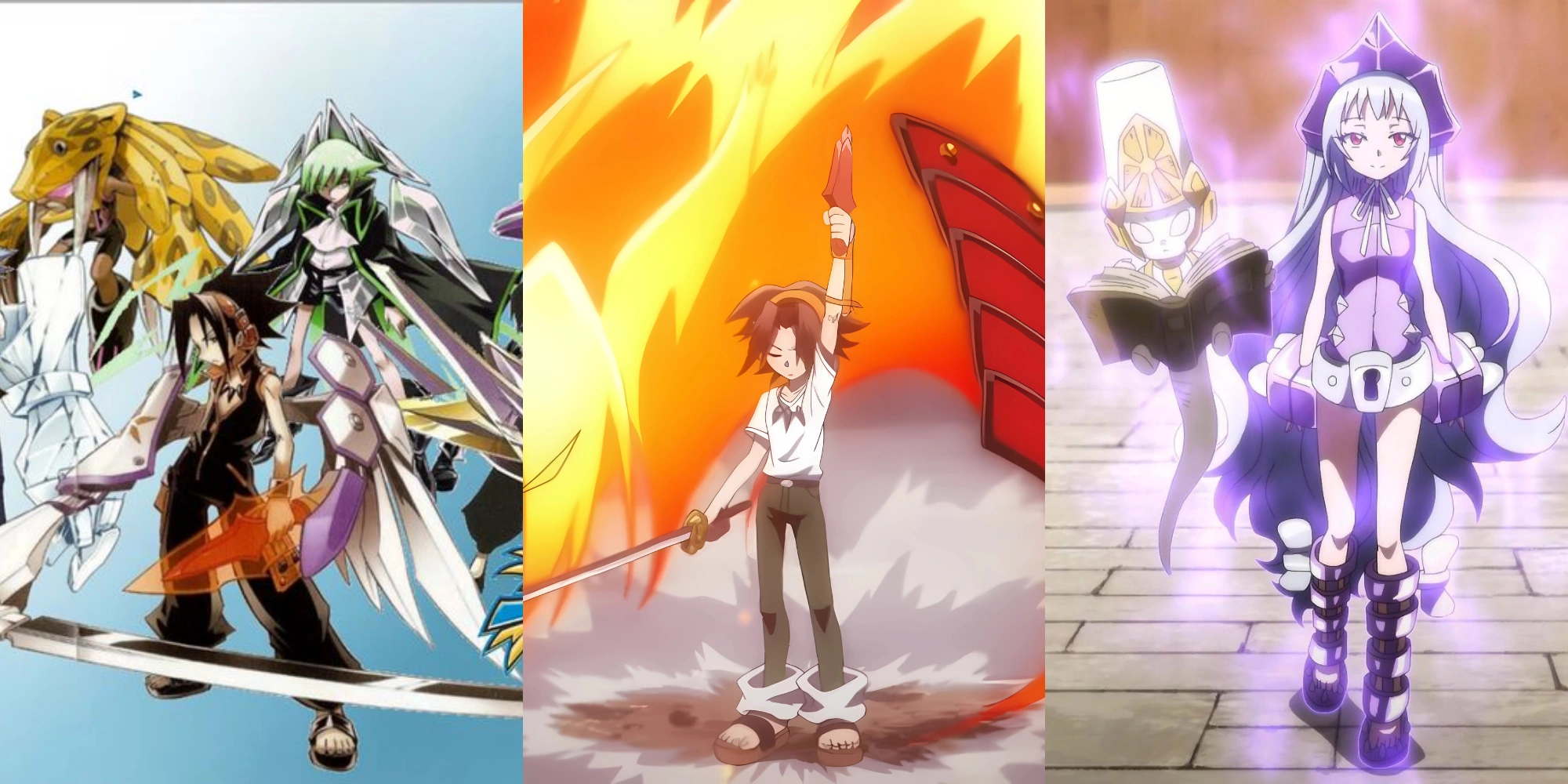I’ve been obsessed with Shaman King since I was a kid, but it wasn’t until my most recent rewatch that I realized just how brilliant and nuanced its power system really is. The way shamans channel their Furyoku (spiritual energy) to manifest Over Souls isn’t just about who has the biggest spiritual reserves - it’s about who uses them most effectively.
Think about it: Yoh constantly battles opponents with way more Furyoku than him, yet somehow keeps coming out on top. Meanwhile, characters like Jeanne burn through massive reserves on just a few actions. It’s clear that in the Shaman Fight, efficiency matters as much as raw power.
So I’ve spent way too many hours analyzing the manga to rank Over Soul forms based on their Furyoku efficiency - essentially, which techniques give shamans the biggest bang for their spiritual buck. This isn’t about who’s strongest overall, but which shamanic techniques make the smartest use of limited resources. Let’s dive in!
1. Faust VIII’s Necromancy
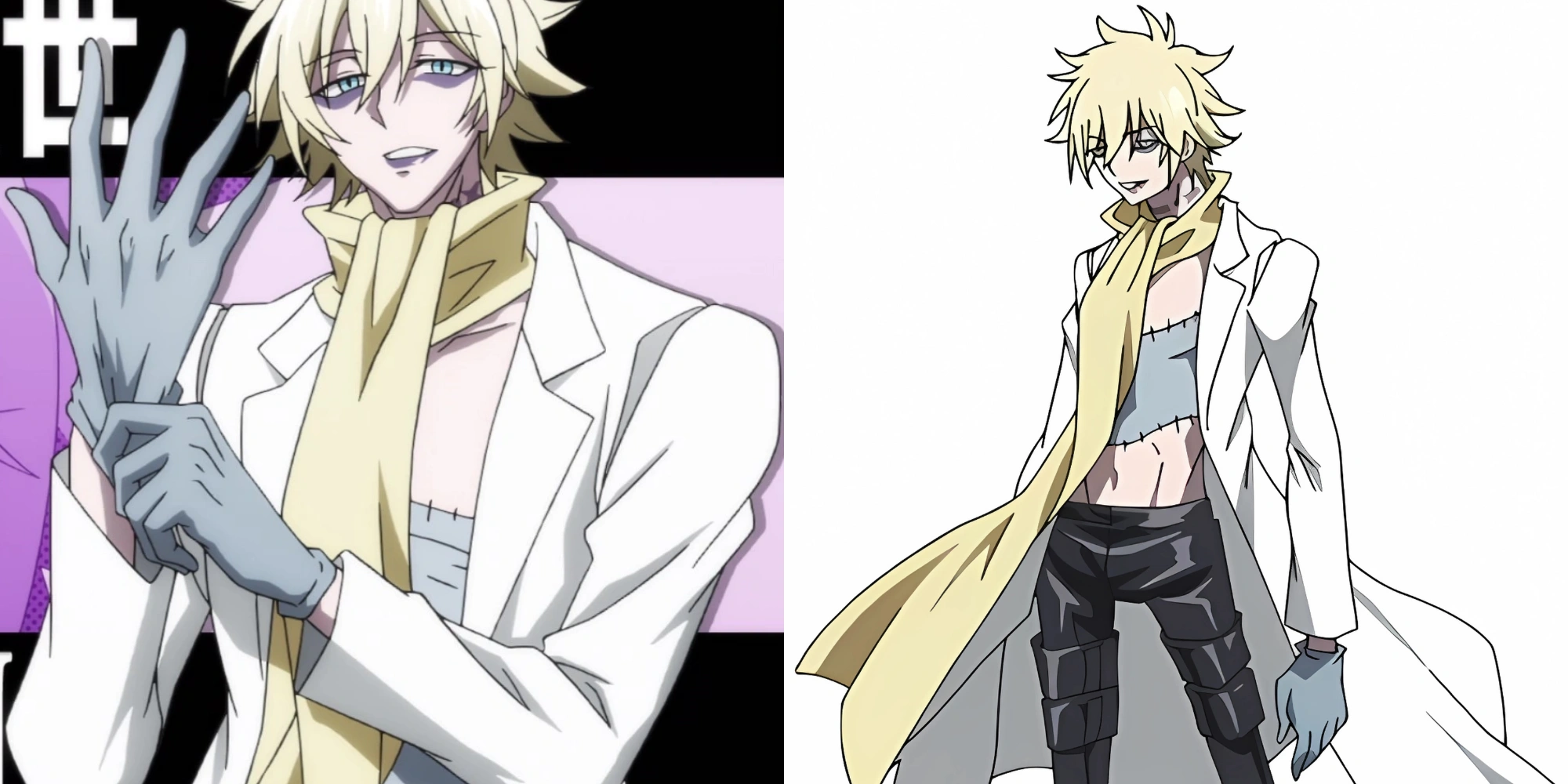
Despite having one of the lowest Furyoku levels in the series (only around 12,500), Faust can control hundreds of skeletons simultaneously while using less than 1% of his energy reserves.
If we’re talking about pure Furyoku efficiency, nothing in the series comes close to Faust’s necromancy. This guy has one of the smallest Furyoku pools among the main cast - around 12,500 units compared to Yoh’s 108,000 by the tournament finals - yet he can control hundreds of skeletons simultaneously using less than 1% of his total energy reserves.
What makes this so ridiculously efficient? Well, Faust is a specialist. While most shamans develop versatile abilities, he poured everything into mastering one specific technique, following in his ancestor’s footsteps. By focusing exclusively on animating the dead, he optimized his Furyoku usage to an absurd degree.
Think about the math: if controlling hundreds of skeletons costs him less than 125 Furyoku points (1% of his reserves), that’s basically pocket change in spiritual terms. Most shamans use more energy just to maintain a basic Over Soul for a few minutes.
This specialized efficiency is exactly what allows Faust to overcome opponents with far greater raw power. Remember when he nearly defeated Yoh in their first encounter? That wasn’t just because Yoh was inexperienced - it was because Faust could get way more mileage out of each Furyoku point, stretching his limited reserves to create an overwhelming undead army.
While his combat Over Souls like Mephisto-E aren’t particularly efficient due to his low reserves and Eliza’s relatively modest Reiryoku (spirit power), his necromancy stands as the undisputed champion of Furyoku efficiency in the entire series.
2. Faust VIII’s Resurrection

When it comes to resurrection, Faust can bring multiple people back from death despite his tiny Furyoku reserves, while Iron Maiden Jeanne drains her massive 500,000+ Furyoku pool after just a few revivals.
Faust makes it to the top two spots because he’s not just efficient at controlling the dead - he’s also unnaturally good at bringing them back to life. The contrast between Faust and Iron Maiden Jeanne when it comes to resurrection is probably the most stark example of efficiency versus inefficiency in the entire series.
Jeanne possesses one of the highest Furyoku levels in the series at over 500,000 units (and potentially as high as 670,000 according to some sources). She commands Shamash, a literal god. Yet after performing just a few resurrections with her “Shamash Kiss” technique, she’s completely drained and vulnerable.
Meanwhile, Faust - with his measly 12,500 Furyoku - can perform multiple resurrections in succession without breaking a sweat. It’s an absurd difference that can’t be explained by skill alone.
The likely explanation lies in Faust’s necromantic specialization and his unique relationship with his spirit, Eliza. His family has practiced death-related shamanism for generations, creating a highly optimized pathway for this specific application of Furyoku. It’s like comparing a sports car designed for one specific track versus a powerful but general-purpose vehicle - the specialist wins in its domain every time.
This resurrection efficiency is perhaps the clearest example in Shaman King of how specialized techniques can dramatically outperform raw power when used in their intended context. Faust’s limited but hyper-focused abilities make him the master of efficiency in the areas of death and revival.
3. Dual-Spirit Armor Over Souls
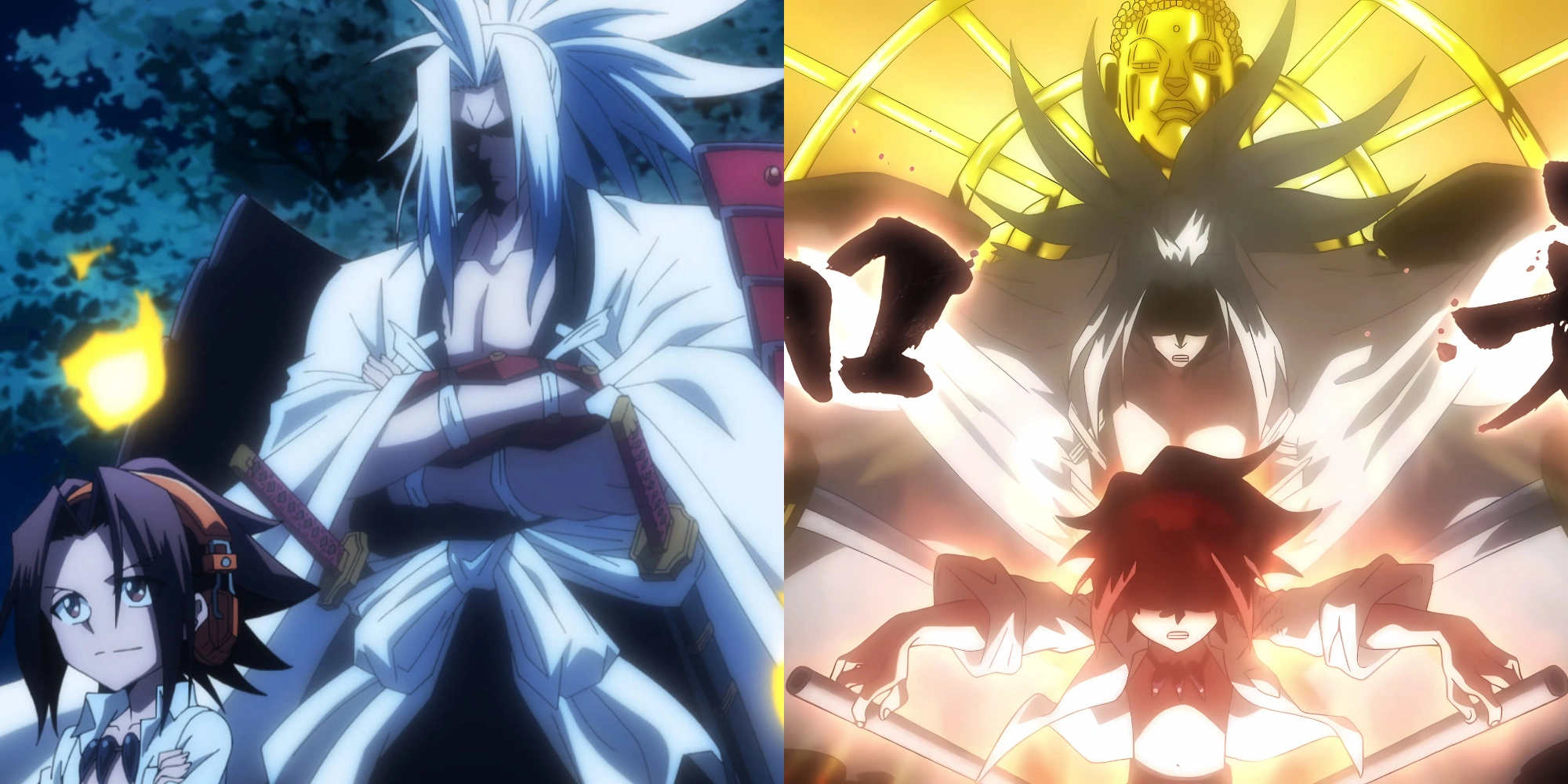
Chocolove’s Jaguarman (combining Mic and Pascal Avaf) and Lyserg’s Mestema Dolkeem (merging Morphine and Zeruel) represent the pinnacle of efficient Over Soul design, creating synergistic effects greater than the sum of their parts.
Among the main cast, the most efficient Over Soul forms are undoubtedly the dual-spirit Armor Over Souls developed by Chocolove and Lyserg. These innovative combinations represent the absolute peak of efficient Over Soul design.
Chocolove’s Jaguarman merges his jaguar spirit Mic with the ancient Olmec spirit Pascal Avaf within an Armor-type Over Soul. This combination doesn’t just add their powers together - it creates a synergistic multiplication effect. He gets Mic’s raw speed and strength plus Pascal Avaf’s ancient wisdom and technique, all packaged in the inherently efficient Armor Over Soul framework.
Similarly, Lyserg’s Mestema Dolkeem combines his fairy Morphine with the archangel Zeruel. This pairing brings together Morphine’s precision and dowsing abilities with Zeruel’s raw divine power, creating an Over Soul greater than the sum of its parts.
What makes these dual-spirit Armor forms so efficient isn’t just that they’re powerful (they definitely are), but that they extract maximum value from each Furyoku point invested. The synergistic effects allow these shamans to achieve results that would normally require significantly more energy if attempted with a single spirit or less advanced Over Soul type.
The manga makes it clear that Armor-type Over Souls are inherently the most efficient form to begin with, concentrating Furyoku into a dense, practical form directly on the shaman’s body. By adding the dual-spirit innovation on top of this already efficient framework, Chocolove and Lyserg pushed the boundaries of what’s possible with spirit integration.
Even though these forms come later in the series when both shamans have higher Furyoku reserves, their efficiency is measured by what they accomplish per unit of energy, not just how long they can be maintained.
4. Yoh’s Furyoku Nullification
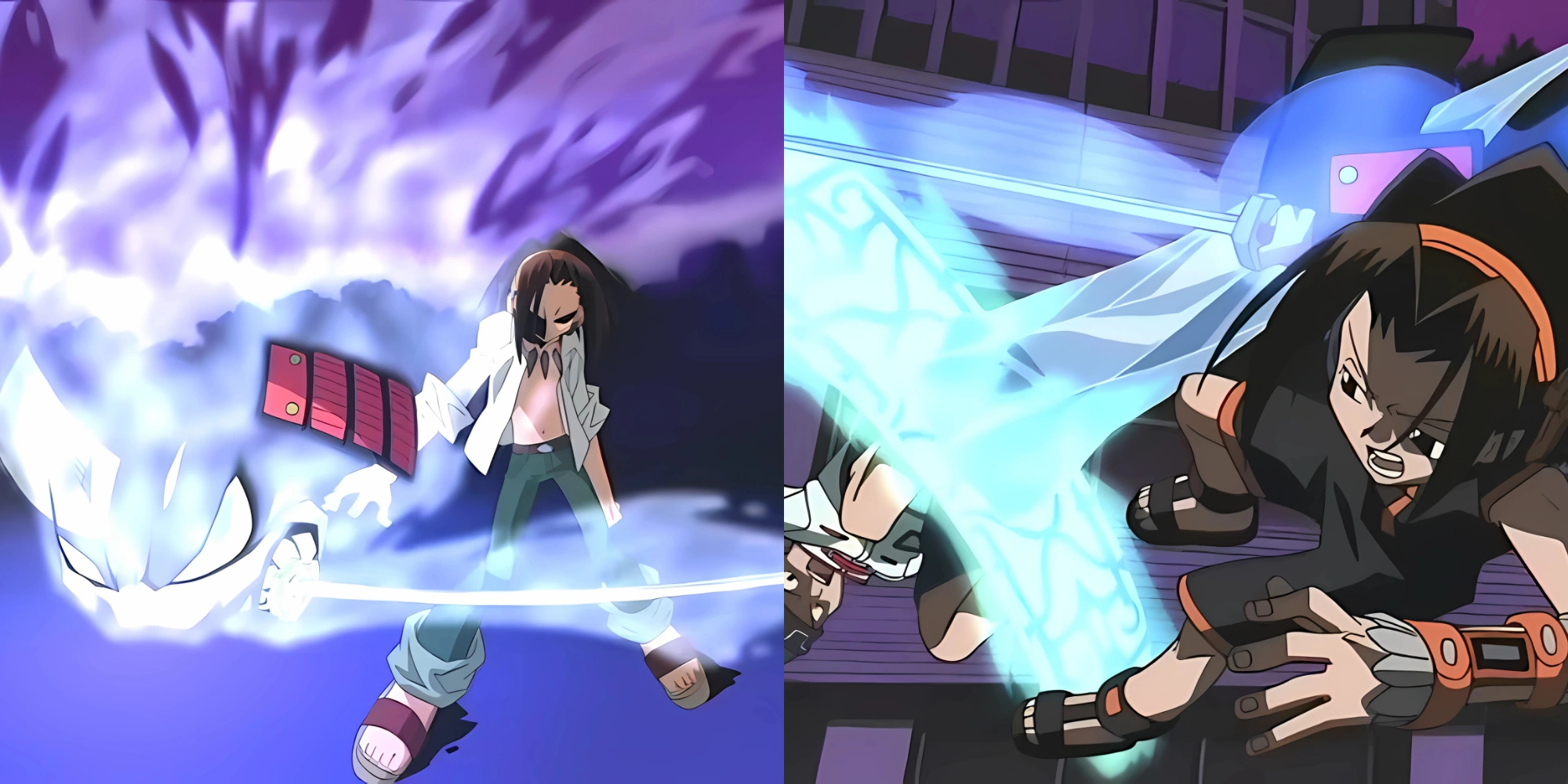
Yoh’s ultimate technique ‘Mu-Mu-Myo-Yaku-Mu’ (Nothingness) allows him to counter and dispel opponents’ Over Souls without matching their power output, instead using mental clarity and spiritual purity.
Yoh’s mastery of Furyoku Nullification deserves special recognition as perhaps the most strategically efficient technique in Shaman King. This ability, which culminates in his ultimate technique “Mu-Mu-Myo-Yaku-Mu” (often translated as “Nothingness” or by its Sanskrit name “Na-Avidya”), represents a completely different approach to efficiency.
While other entries on this list are efficient in how they use Furyoku, Yoh’s technique is efficient in how it avoids using it. The basic principle is mind-blowing: instead of countering an opponent’s Over Soul with an equally powerful one, Yoh can disrupt or even completely dispel it by achieving perfect mental clarity and spiritual purity.
The implications for Furyoku conservation are enormous. When facing an opponent with vastly greater spiritual reserves (looking at you, Hao), trying to match them power-for-power is a losing strategy. But Furyoku Nullification effectively short-circuits this dynamic. It’s like finding a way to turn off a nuclear reactor rather than building a bigger one to compete with it.
We see an early version of this concept when Ren fights his father, Tao En. By dispelling his own Over Soul and psychologically unsettling En, Ren briefly nullifies his father’s power. Yoh eventually perfects this into a reliable technique that becomes central to his fighting style, particularly in the Yoh vs Hao shamanic ability showdown that defines the series.
What makes this technique so fascinating from an efficiency standpoint is that it substitutes mental discipline for Furyoku expenditure. In a power system where spiritual energy is a limited resource, finding a way to achieve effects without depleting that resource represents the ultimate form of efficiency.
5. Horohoro’s Avalanche
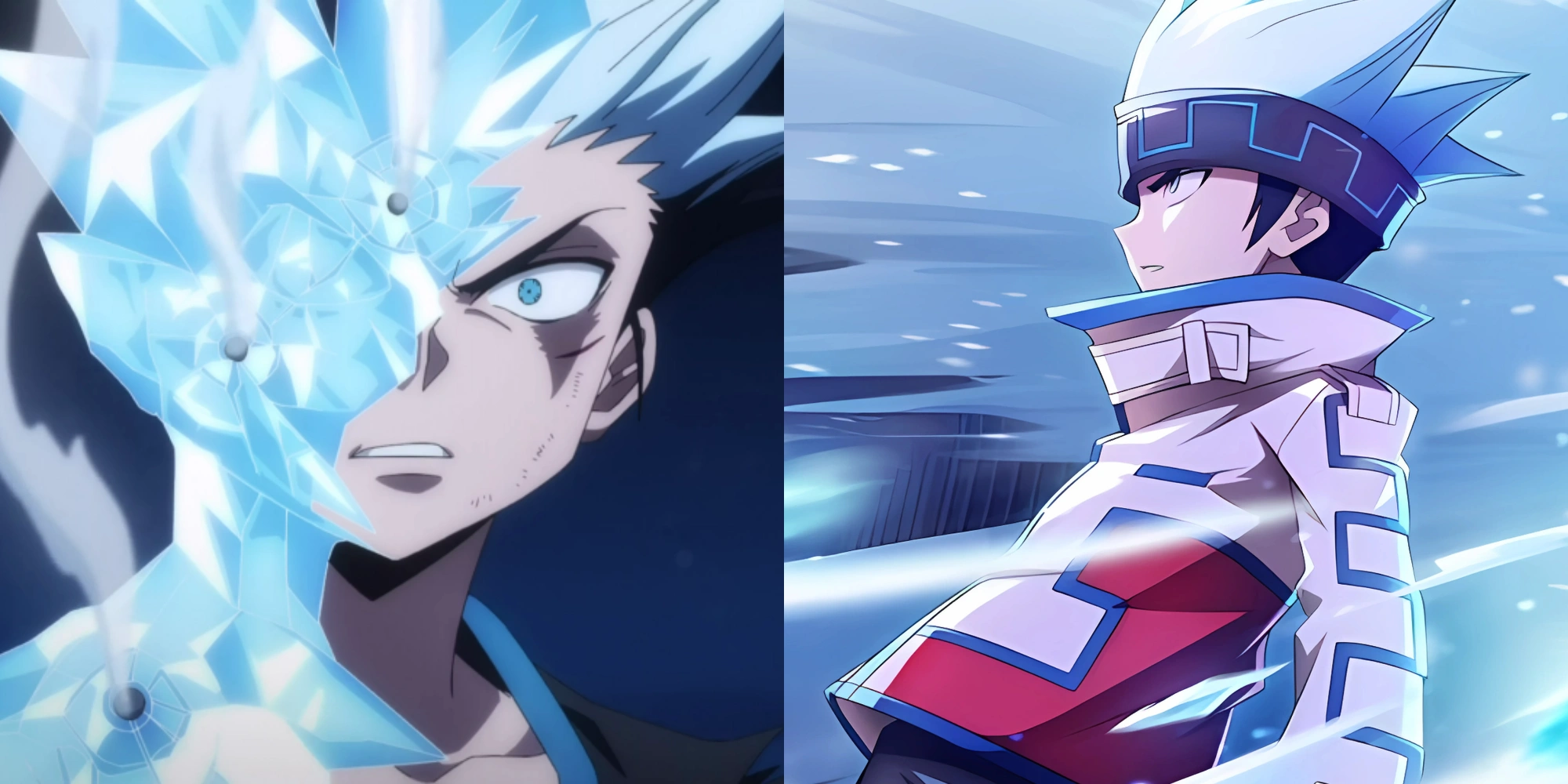
Horohoro’s Epittarki Upas-Horkkek technique creates building-sized avalanches for just 100 Furyoku points each, allowing him to potentially unleash 1,200 avalanches before exhausting his mid-series reserves.
Horohoro doesn’t get enough credit for having one of the most efficient large-scale techniques in the series. His “Epittarki Upas-Horkkek” (avalanche) technique is an absolute gem when it comes to Furyoku efficiency for area-of-effect attacks.
According to information from the series, this massive, building-sized wave of ice costs Horohoro only about 100 Furyoku points per use. To put that in perspective, with his mid-series Furyoku level of around 120,000, he could theoretically unleash 1,200 avalanches before running out of energy. That’s an absolutely ridiculous return on investment.
What makes this particularly interesting is that elemental manifestation (creating actual physical phenomena like ice or lightning) is generally considered more Furyoku-intensive than standard Over Soul techniques. Even Hao, with his enormous reserves, acknowledges the difficulty in managing the mana consumption required for elemental manipulations.
So why is Horohoro’s ice creation so efficient? The key likely lies in his spirit partner. Kororo is a Koropokuru, a nature spirit specifically aligned with ice and cold. This natural affinity probably creates a more direct pathway for converting Furyoku into ice, reducing the energy loss that would normally occur when shamans try to create physical elements.
The avalanche technique stands as a perfect example of how specialized spirit partnerships can create unique efficiency advantages. While Horohoro might not match Faust’s necromancy in terms of pure efficiency, the sheer scale of effect he achieves for such a minimal Furyoku investment makes this technique a standout in terms of area control and environmental manipulation.
6. Standard Armor Over Souls
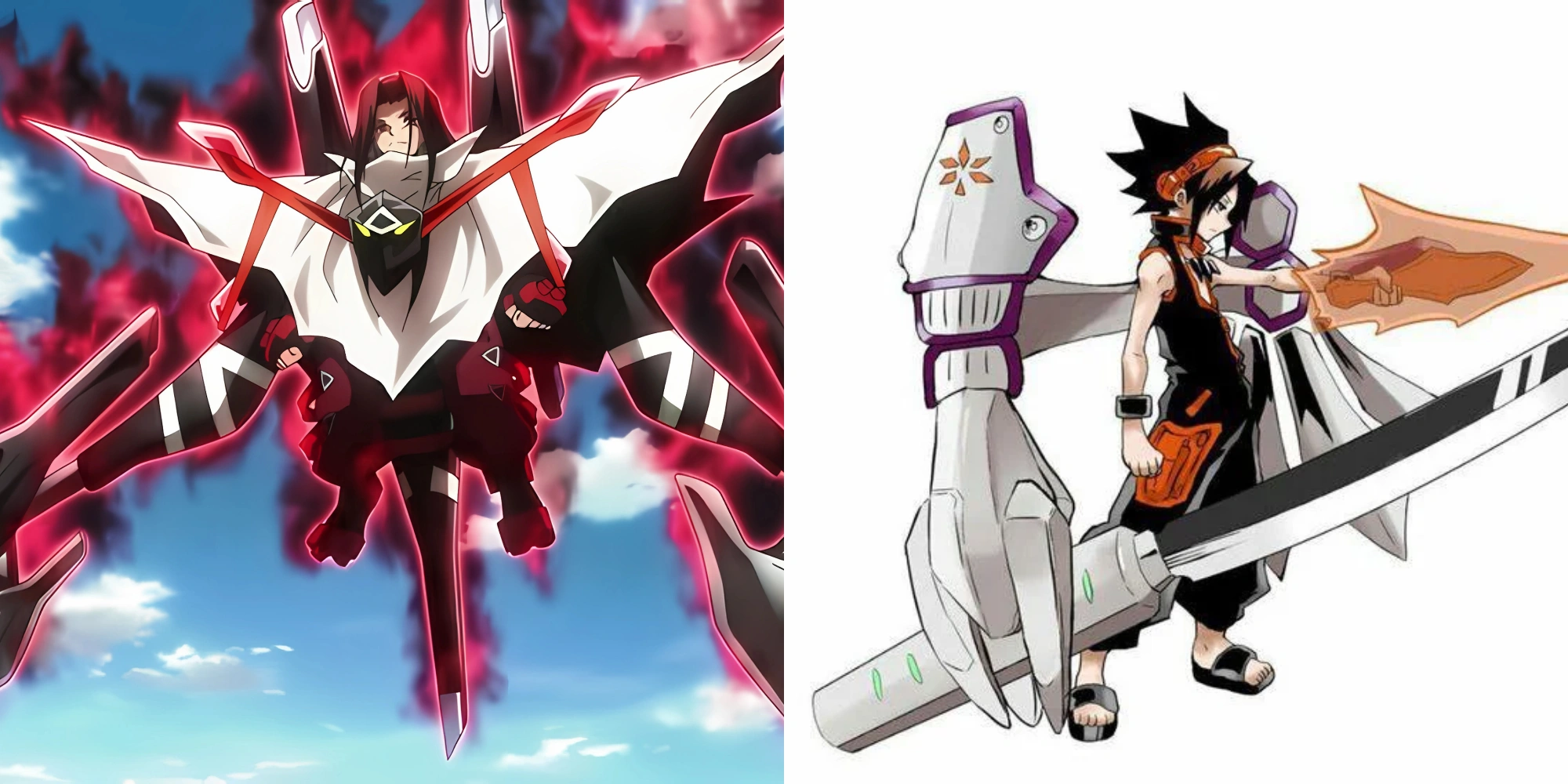
Armor-type Over Souls are canonically the most efficient form, concentrating Furyoku directly onto the shaman’s body to maximize both offensive and defensive capabilities while minimizing energy leakage.
The Shaman King manga explicitly states that Armor-type Over Souls represent the most efficient Over Soul form, and it’s not hard to see why. These highly concentrated manifestations wrap directly around the shaman’s body, creating a perfect fusion of offense and defense with minimal energy leakage.
What makes Armor Over Souls so efficient is their structure. Unlike Weapon-types that extend energy outward or Spirit-types that manifest a broader form, Armor O.S. integrates the spirit and Furyoku directly onto the shaman’s body in a highly dense formation. This high density minimizes wasted energy while maximizing both protective and offensive capabilities.
Think of it like the difference between wearing a full-body suit of insulation versus trying to heat a large, drafty room. The Armor Over Soul keeps all that spiritual energy right where it’s needed most, creating a practical, balanced application of power that makes the shaman themselves both the weapon and the shield.
All of the main cast eventually develop Armor Over Souls as they advance their shamanic abilities: Yoh’s Spirit of Earth, Ren’s Spirit of Thunder, Horohoro’s Spirit of Rain, Lyserg’s Spirit of Fire, and Chocolove’s Spirit of Wind, as well as their personal Armor forms like Ren’s Bushin Yú Long or Horohoro’s Nipopo Tekunpe.
While these god-class Armor forms acquired at the end of the series are immensely powerful due to the nature of the spirits involved, it’s their inherent efficiency in converting Furyoku into usable power that earns them this high ranking. Even before obtaining these ultimate forms, the transition from Weapon or Spirit-type to Armor-type represents a significant upgrade in how effectively each shaman uses their spiritual energy.
7. Yoh’s Adaptable Amidamaru

Yoh demonstrates remarkable efficiency by consciously adjusting his Over Soul’s size and focus to conserve Furyoku, creating a smaller but more concentrated weapon when facing Ren’s larger, more costly manifestation.
Long before Yoh masters advanced techniques like Furyoku Nullification or gains access to the Spirit of Earth, he shows an intuitive understanding of efficiency through his adaptable use of Amidamaru in Over Soul form.
What sets Yoh apart from many of his early opponents is his willingness to adjust his Over Soul to the situation. During his intense battle with Ren, Yoh consciously creates a smaller, more focused Over Soul sword to conserve Furyoku. This more concentrated form allows him to pierce Ren’s larger, more costly Over Soul despite the apparent size disadvantage.
This adaptive approach showcases a fundamental efficiency principle: bigger isn’t always better. By focusing his Furyoku into precisely what he needs rather than creating flashy, oversized manifestations, Yoh stretches his relatively modest reserves (compared to opponents like Ren or Hao) much further.
As the series progresses, Yoh’s naturally gentle Furyoku demonstrates other efficiency advantages. It’s noted to potentially deflect incoming attacks, offering a passive form of energy conservation by reducing damage to his Over Soul. His later “Spirit of Sword” Over Soul, utilizing both Harusame and Futsunomitama as mediums, proves capable of defeating multiple strong opponents in single strikes, suggesting a potent power-to-cost ratio.
What makes Yoh’s approach particularly worthy of recognition is that it’s not just a natural talent but a conscious strategy. He knows he can’t match opponents in raw power, so he focuses on precision, timing, and efficient use of his resources. This mindset is exactly what allows him to progress through the tournament despite frequently being at a numerical Furyoku disadvantage.
8. Hao’s Spirit of Fire
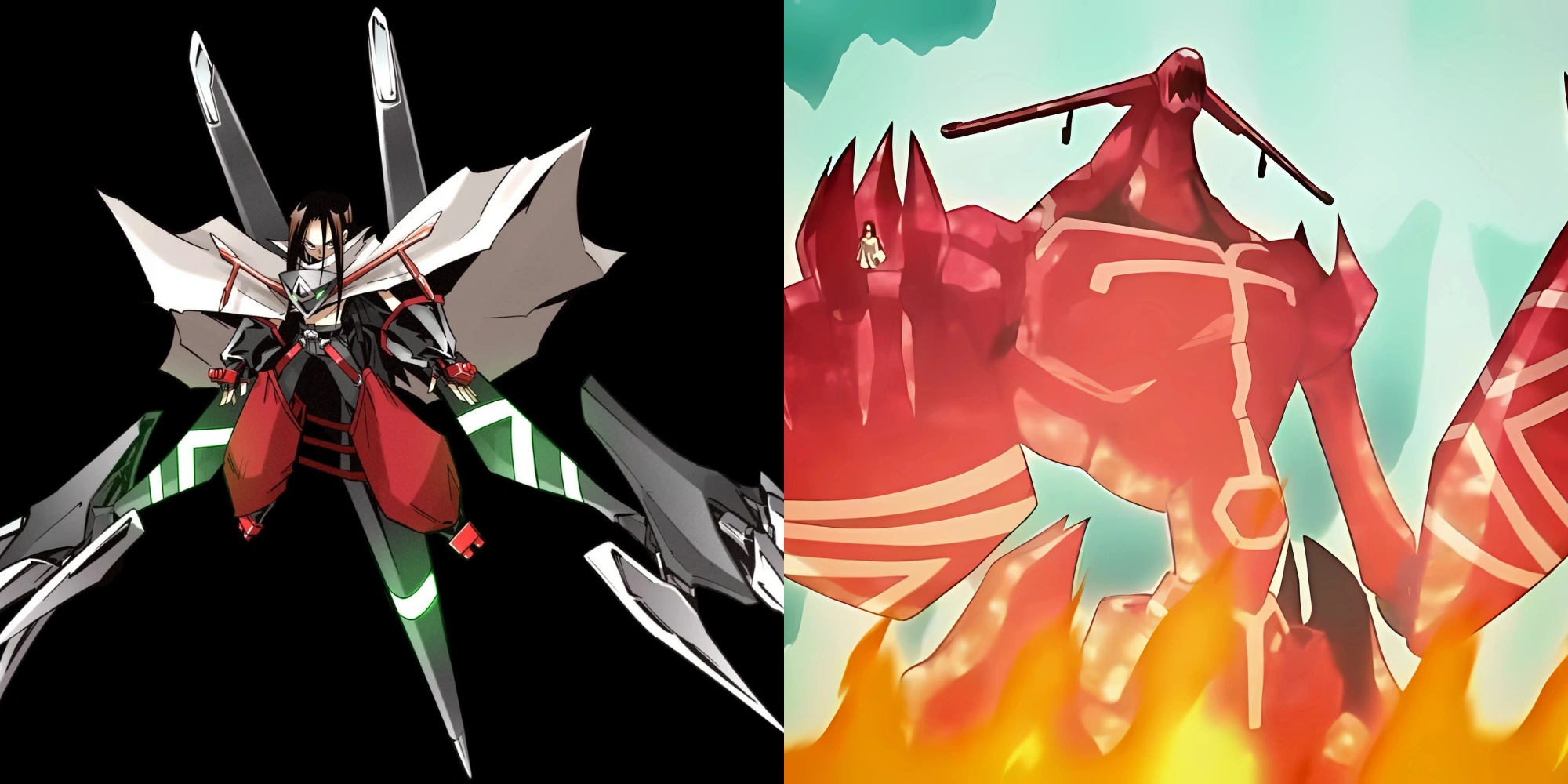
The Spirit of Fire requires approximately 300,000 Furyoku points to manifest—a staggering cost that only Hao with his 1,250,000 Furyoku can sustain, making it powerful but not technically efficient per unit of energy spent.
I know what you’re thinking - how could Hao Asakura’s Spirit of Fire, arguably the most powerful Over Soul in the series, rank so low on an efficiency list? The answer lies in the difference between raw power and efficient use of resources.
The Spirit of Fire is unquestionably devastating. As one of the five Great Elemental Spirits stolen from the Patch Tribe, it gives Hao the ability to unleash catastrophic attacks like magma blasts and defensive fire walls. Through his mastery of Onmyōdō magic, he can even change its elemental nature between fire, water, wood, metal, and earth.
But all this power comes at an enormous cost. The Furyoku required to manifest the Spirit of Fire is approximately 300,000 points - a staggering amount that would completely drain most shamans instantly. Even Hao himself, with his colossal Furyoku reserve of 1,250,000, acknowledges that the constant elemental manipulation is demanding in terms of mana control.
In terms of pure efficiency - power output per unit of Furyoku invested - the Spirit of Fire is actually quite costly. It’s “efficient” only in the sense that Hao’s vast reserves make it sustainable for him. For anyone else, it would be ruinously expensive to maintain.
This ranking isn’t meant to diminish Hao’s power; in fact, it highlights why he’s so formidable. He can afford to be inefficient because his spiritual reserves are so enormous that it simply doesn’t matter. It’s like comparing someone who drives an ultra-efficient compact car because they need to watch their gas budget versus someone who drives a gas-guzzling supercar because they’re billionaires who don’t need to care about fuel costs.
Hao’s approach to shamanic combat transcends typical efficiency concerns. When you have over a million Furyoku points at your disposal, brute-forcing your way through problems becomes a viable strategy, even if it’s not the most elegant solution from an efficiency standpoint.
Shaman King Power System FAQ
How does the Furyoku system work in Shaman King?
Furyoku (巫力) is basically a shaman’s spiritual energy tank - the fundamental resource that powers all their supernatural abilities. Unlike some anime power systems that let characters train to increase their power indefinitely, Furyoku is largely fixed at birth, though it can increase dramatically after recovering from near-death experiences.
What makes the system interesting is that Furyoku is a finite resource in battle. Using techniques, taking damage to your Over Soul, or maintaining forms for extended periods all drain your reserves. Once you’re out, you’re essentially powerless until you can recover (which typically takes time outside of combat).
Distinct from Furyoku is Reiryoku (霊力), which represents the inherent power level of a spirit. Think of Furyoku as the shaman’s fuel tank, while Reiryoku is the potential power output of the engine (the spirit partner). The effective power ceiling of an Over Soul is determined by whichever is lower - the shaman’s Furyoku or the spirit’s Reiryoku.
This creates fascinating dynamics where someone with massive Furyoku (like Hao) can’t force a weak spirit beyond its capacity, while someone with limited Furyoku (like many of the X-Laws) can’t fully utilize the potential of their powerful angel spirits without risking death from exhaustion.
The beauty of this system is that it encourages strategy over brute force. Conserving Furyoku, using it efficiently, and knowing when to go all-out become critical skills, making battles about more than just who has the bigger spiritual reserves.
What are the different types of Over Souls?
The Shaman King over soul types fall into three main categories, each with distinct advantages and efficiency profiles:
Weapon-type Over Souls channel spirits into physical objects, typically weapons. These are the most common form, especially for beginners. Examples include Yoh’s Amidamaru in Harusame, Ren’s Bason in his Kwan Dao, or Lyserg’s Morphine in his pendulum. They’re relatively straightforward to maintain but offer limited defensive capabilities since the spirit’s power is focused primarily in the weapon.
Spirit-type Over Souls manifest the spirit’s complete form. These tend to be larger and more visually impressive, like Ren’s “Giant Spirit Form” of Bason or the X-Laws’ Archangels. They can be quite powerful but are generally less efficient than other types since they distribute Furyoku across a larger manifestation. Their advantage is versatility, as they can utilize the spirit’s full range of abilities.
Armor-type Over Souls are the most advanced and efficient form. They integrate the spirit directly onto the shaman’s body, creating a dense, practical enhancement that offers both offensive and defensive capabilities. Examples include Yoh’s Spirit of Earth armor, Ren’s Bushin Yú Long, or at the highest level, the god-class elemental armors. These provide the best bang-for-your-Furyoku-buck by minimizing energy leakage and maximizing power concentration.
Some shamans develop hybrid or specialized forms that don’t fit neatly into these categories. Chocolove’s early “Black Jaguar” form involves partial integration with Mic, while Faust’s necromancy technically creates multiple small Over Souls with minimal Furyoku investment. These specialized approaches often reflect the shaman’s unique philosophy or fighting style.
What’s fascinating is watching characters progress through these types as they grow stronger, typically starting with Weapon-types, experimenting with Spirit-types, and eventually mastering Armor-types, representing their evolution as shamans.
What makes a medium powerful in Shaman King?
The strongest medium in Shaman King isn’t necessarily the most physically impressive object, but rather the one with the optimal combination of connection, compatibility, and practical application.
The most fundamental quality of a powerful medium is its connection to either the spirit or the shaman. The stronger this connection, the more efficiently Furyoku flows through it. This is why personal items with emotional significance make excellent mediums - Yoh uses Amidamaru’s own sword Harusame, Faust uses his wife Eliza’s remains, and Lyserg uses his father’s pendulum.
Material composition matters too. Some materials naturally conduct spiritual energy better than others. Traditional sacred objects, weapons with history, or items with inherent power (like the Patch Tribe’s mediums) provide additional benefits beyond just the connection factor.
Size isn’t particularly important for raw power - Hao uses the oxygen in the air as his medium for the Spirit of Fire, allowing for incredibly fast manifestation with minimal preparation. Conversely, Lyerg’s tiny pendulum becomes extraordinarily versatile in his hands.
The most powerful mediums also tend to evolve with their users. Yoh eventually combines Harusame with the Futsunomitama sword, creating a dual-medium that enhances his Over Soul. The Five Warriors ultimately receive the Patch Tribe’s elemental mediums, which are specifically designed to channel the immense power of the elemental spirits.
What’s fascinating is that a medium’s power isn’t static - it grows with the shaman’s skill and understanding. What made a powerful medium for a beginner might be limiting for an advanced practitioner, which is why many characters upgrade or modify their mediums as they progress through the Shaman Fight.
How does Yoh compare to Hao in terms of shamanic ability?
The Yoh vs Hao shamanic ability comparison is fascinating because it represents two completely different approaches to power.
In raw numbers, there’s no contest. Hao possesses approximately 1,250,000 Furyoku points compared to Yoh’s 108,000 at his peak before the final battle. Hao’s 1,000+ years of experience across multiple reincarnations gives him mastery over numerous shamanic traditions, including the formidable Onmyōdō magic. He wields the Spirit of Fire, one of the five elemental spirits, which alone outclasses Amidamaru in terms of raw Reiryoku.
But shamanic ability isn’t just about numbers. Yoh’s strength lies in his efficiency, adaptability, and spiritual insight. He develops techniques like Furyoku Nullification that allow him to counter opponents far stronger than himself. His gentle soul and natural affinity for spirits give him unique advantages, like his ability to befriend and understand spirits that others might fear or try to dominate.
What truly separates them is their philosophy toward shamanism. Hao views spirits and Furyoku as tools for power, maintaining perfect control through his overwhelming strength. Yoh seeks partnership and harmony, working with spirits rather than simply commanding them. This fundamental difference is reflected in their techniques - Hao’s flashy, dominant displays versus Yoh’s efficient, focused applications.
The series ultimately suggests that Yoh’s approach represents a more authentic understanding of what shamanism should be, even if Hao’s method produces more immediately impressive results. It’s quality versus quantity, refinement versus raw power - and in the end, Yoh’s ability to connect with others (both living and dead) proves to be the more valuable shamanic skill.
What happens when a shaman runs out of Furyoku?
When a shaman completely depletes their Furyoku reserves, the consequences are immediate and potentially dangerous. First and most obviously, any active Over Souls instantly dissipate as there’s no energy left to maintain them. This leaves the shaman essentially defenseless in combat situations.
Physically, extreme Furyoku depletion causes intense fatigue, weakness, and potentially unconsciousness. The body and spirit are deeply connected, so emptying your spiritual reserves affects your physical condition as well. We see this happen to multiple characters throughout the series when they push themselves too far.
Recovery from Furyoku depletion takes time - it’s not something that replenishes instantly like mana in some fantasy games. The manga suggests that complete recovery can take days of rest for severe depletion. This creates strategic considerations in the Shaman Fight, where conserving energy between matches becomes crucial.
There’s also a psychological component. Shamans who frequently exhaust their Furyoku may develop anxiety about their limits or become hesitant to fully commit in battle, knowing the vulnerability that follows depletion. Conversely, learning to precisely gauge one’s limits becomes an important skill for experienced shamans.
In extreme cases, trying to channel more Furyoku than you have available can be life-threatening. This is most dramatically illustrated with the X-Laws who try to utilize the immensely powerful archangel spirits despite having insufficient Furyoku. Hans Reiheit, for instance, could only maintain an Over Soul with Archangel Azazel for three seconds before risking death from overexertion.
This finite nature of Furyoku is what makes efficiency so important in Shaman King’s power system. Unlike some battle manga where characters can keep pushing beyond their limits indefinitely, shamans face hard ceilings that make tactical usage of their resources essential.
